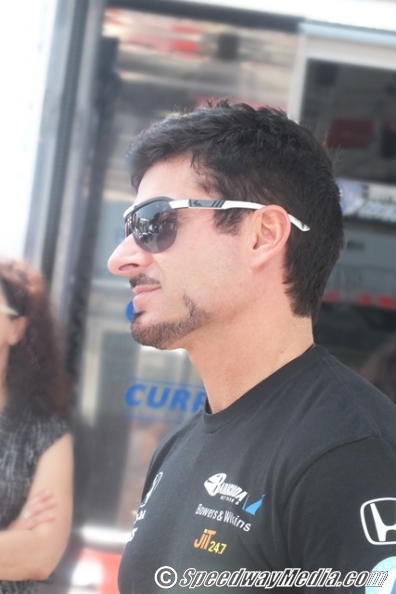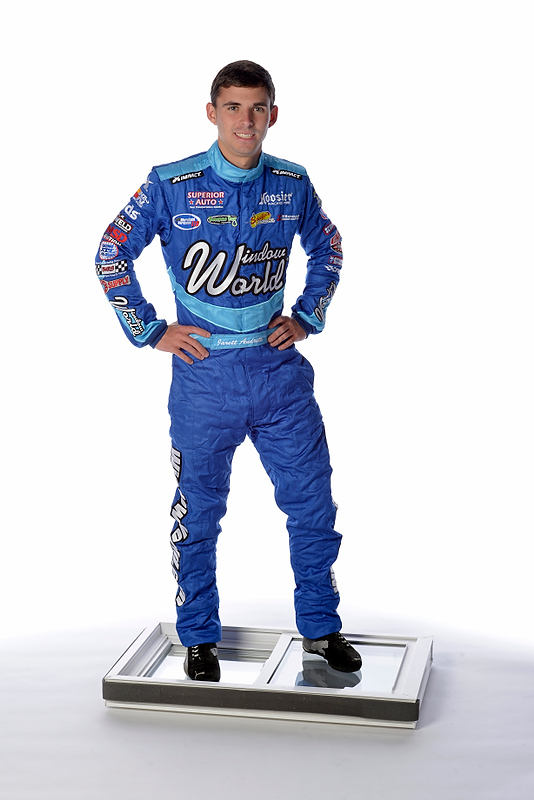Today’s IndyCar Series and Mazda Road to Indy headlines:
1. Teams try to make every preseason test day count
2. INDYCAR paddock adds technical expertise to Olympic bobsled effort
1. Teams try to make every preseason test day count: Mike Conway selects a spot out of the sun on Sebring International Raceway’s pit lane for a conversation with Ed Carpenter Racing and Chevrolet engineers.
The dialogue during an extended break during a team test day includes performance characteristics of the twin turbocharged 2.2-liter V-6 engine, handling on the abrasive 1.67-mile surface, shocks, balance, braking. Conway recalls details of every alteration, almost every lap of the program checklist that includes new components from brake supplier Brembo and tweaks to the engine since it last ran.
“This is our third test and fourth day with Mike,” said Ed Carpenter, the lone team owner/driver in the IndyCar Series. “It takes time to get to know each other and for him to learn how we work and communicate and for us to understand how Mike communicates. That’s not the type of thing that happens in one test day, so these days are really important for being prepared for St. Pete. I feel we get better each time we go out.”
Conway, who will drive the No. 20 Fuzzy’s Ultra Premium Vodka car in the road/street course events this season, adds: “It’s me knowing what I need from the car and trying to find out what I want and not just driving around.”
Each IndyCar Series team is allotted 18 test days (Nov. 7 was the start date) through the final 2014 race event, comprised of engine manufacturer, team, Open Tests and full-size wind tunnel tests. Entrants also are allocated two additional team days for testing of a rookie driver and two additional team days for testing an Indy Lights Presented by Cooper Tires driver.
Open Tests are scheduled for Barber Motorsports Park (March 17 and 18), the Indianapolis Motor Speedway road course (April 30) and Auto Club Speedway (Aug. 27) – all in advance of races on those tracks.
Without much track time during event weekends, preseason on-track days – as Conway notes — are crucial.
“You have to get the car as best as it can be because it’s so competitive (in the series),” said Conway, who won the first of the doubleheader race at Detroit last year. “You have to have a good base setup to start with, which makes things a lot easier. After every day we come out with a lot of positives. I’ve been learning a lot.”
Ed Carpenter Racing race engineer Matt Barnes worked out a test program with the engineering staff before the new year.
“On an oval track, you usually want to test a race setup,” Barnes said. “A team and driver want to run in traffic if possible. At a road course, you could basically be by yourself if you want. Then you can do things all day to improve the car. At a road circuit, you tend to change a lot of things.
“Trying to stay focused on the test plan is the most important thing. You still can be learning about your car even if you are not as fast as others. Often, the manufacturers are doing different programs, too.
“I think we have high expectations what we can accomplish with Mike this year.”
2. INDYCAR paddock adds technical expertise to Olympic bobsled effort: When the Olympic bobsled competition begins later this month in Sochi, Russia, the IndyCar Series paddock will have a watchful eye.
Former Panther Racing engineer David Cripps and Rahal Letterman Lanigan Racing co-owner Bobby Rahal have played a role in getting Team USA into medal contention.
Aside from relative speeds, there are parallels between bobsleds and IndyCars that intrigue Cripps, the former Panther Racing chief engineer. Since June, he’s been an integral member of the USA Bobsled and Skeleton team seeking to strike gold at the Sochi Olympics this month.
“My responsibilities are very similar to an IndyCar race engineer. I am basically responsible for the performance, reliability, development and day-to-day running of the sleds,” Cripps said a few days ahead training runs on the serpentine run in Russia. “There has been a fairly large amount of development upgrades coming up to the Games.”
Cripps’ move to winter racing can be traced to the IndyCar Series race at Belle Isle in 2012 when he provided a tour of the Panther Racing operation for USA Luge officials, who were guests of team sponsor National Guard.
“There are similarities to IndyCar racing, and it has been such an invigorating challenge to learn a new form of racing,” Cripps said. “So far, this has been an amazing adventure and the best is yet to come. It truly has been an honor to work with such an amazing group of athletes and coaches. Their level of effort and dedication is commendable. I think we will be assembling one of the strongest pit crews ever for this year’s Indy 500.”
Like IndyCar racing, technology drives the bobsleds and its two-man sled was older than some of the athletes competing in the Vancouver Games. So the team turned to BMW DesignWorks USA to supply a new sled and later to Rahal Letterman Lanigan Racing for technical advice.
Six of the two-man sleds for the Games, designed and built by BMW Group DesignworksUSA studio and made from the same carbon fiber that comprise much of an IndyCar Series chassis and components, received a steering upgrade from the Rahal Letterman Lanigan Racing group in Hilliard, Ohio.
“(Technical Director) Jay (O’Connell) suggested various changes to the geometry of the steering and we manufactured the pieces in the shop and the guys absolutely loved it,” team co-owner Bobby Rahal said. “The first race they dominated. It makes you feel good that you contributed to the success of the program.”
Rahal has been a major contributor since August 2012, when he was named chairman of the U.S. Bobsled & Skeleton Foundation.
“My major responsibility as chairman of the foundation, which is different from the actual team, is to create the funding opportunities so the program continues to have financial stability and not just going year to year looking for sponsorship,” he said of the 501c3 charity. “It’s meant to create a financial base, and that means me contacting companies and individuals to contribute. We’ve had some good response and raise some significant sums, but that’s a never-ending process.
“It’s a thrill for me, and I’m a huge fan and supporter of the Olympic ideal and spirit, especially Americans competing against the best the world has to offer. Hopefully, we’ll bring that gold home again.”
And there’s a good chance. Steven Holcomb and his push crew have had a successful World Cup season heading to Sochi, winning nine of 16 four-man and two-man races. On Jan. 27, Holcomb won the World Cup overall title in two-man and finished second in the four-man standings. He’s seeking to become the first American pilot since Bill Riske in 1928 and ’32 to win consecutive gold medals in the four-man competition.









